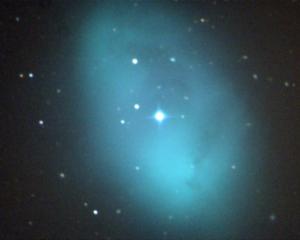
The sky is a uniform grey- a sort of damp wool blanket flung indifferently over our corner of the world. As I write this, the forecast promises more of the same.

So what does an astronomer do when the skies are cloudy, and the moon is full? Well, I've found a new way to watch the sky and it's not what you might expect.
Last week, with the help of some competent electricians and a lot of careful reading of instruction manuals, I installed 28 solar panels at our place in Middlemarch.
The primary goal, of course, was to generate electricity and reduce dependence on the grid. But in the process, I discovered a new and somewhat compulsive form of skywatching.
You see, the solar panels come with an app. And this app - a marvel of the modern age - shows me how much electricity I'm generating. At 9am on a sunny winter day, the panels might produce a piffling 30w.
But by 12.30pm, when the sun is at its highest, they're cranking out over 4000w, all quietly stored away for future use in a sleek battery in the shed.
Anyway, the app has become my new form of solar observation. Who needs sunspots when you can chart kilowatt-hours with obsessive glee?
Even on a gloomy day when the rain is pouring, the system still generates power. Despite clouds blocking the sun, the panels produce over a kilowatt of electricity. This shows us that, no matter the weather, the sun is always sending us energy.
I suppose, in a way, I've built a solar observatory in Middlemarch - one that both watches and is powered by the sun.
So now, when I can't observe the sun with my telescopes, I can still store its energy for future use.












